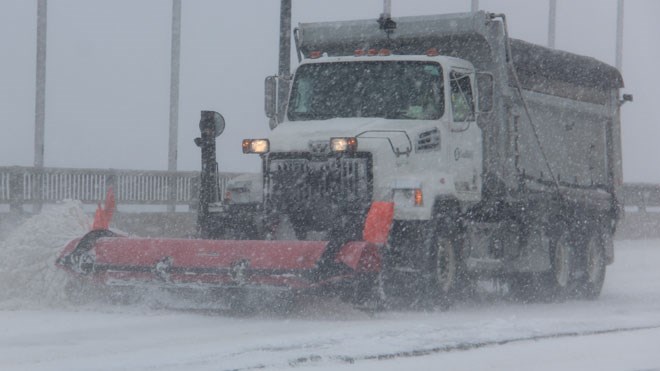After a record-breaking winter last year, this year's winter weather is presenting a new set of challenges for the city's snow removal department.
A report headed to the operations committee Monday afternoon says Greater Sudbury received 12.3 feet of snow as of the end of November 2019. The average for that time period over the last 30 years is 6.56 feet. In February, for example, 101.2 cm of snow fell, compared to the 30-year average of 51.7 cm. We even got 12 cm of snow in May – compared to the 1.9 cm that usually falls.
For the current winter, the city received its first major storm at the end of October, a month when 19.4 cm of snow fell, while we normally get 5.7 cm. In November, 80.8 cm fell, compared to the 30-year average of 29.6 cm.
“One difference seen this season over last season is some mild weather between snow storms which has caused some melting periods,” the report said. “From a maintenance perspective, melting periods most certainly help with the amount of snow on the edge of roads and sidewalks but also contributes to the need for additional maintenance activities such as drain opening and/or road scraping.”
The early onset of winter also presented training challenges, the report says. Employees are added in late fall and are usually trained as the winter slowly gears up. The severe storm in October – and two more in November – made training difficult.
“The timing and amount of snow challenged staff to complete training in a shorter time period,” the report says. “In addition to staff training, there is also an above average number of employees off work for various medical reasons which has created significant stress on the casual pool.”
The October storm also made it more difficult to use local contractors for snow removal, “as most of them were still attending to third-party project work,” the report says. Contractors normally begin Nov. 15 each year. And warmer temperatures brought freezing rain – and complaints from residents.
“Staff fully deploy as quickly as possible but cannot get to all parts of the city quick enough as it relates to public expectations,” the report said. “It is staff’s intention to provide the public with better advance notice of such significant weather events through newly developed procedures. Invariably, the public will have to be very careful when driving/walking when these events occur.”
Residents have also been asking for snow banks to be removed, the report said, but current policy has those banks removed only when sightlines become an issue, or the banks begin to make the road too narrow, at bus stops and in front of churches at Christmas.
Cul-de-sacs have also become an issue, the report said, with residents asking to have snow removed from the front of their properties. Cul-de-sacs are tough for plows, the report said, because there isn't room for the big plows to manoeuvre.
“Staff are constantly answering calls from the public on this issue,” the report said. “The city deploys 4x4s or loaders to clear cul-de-sacs and bulb outs at the same time plows are deployed on the class 4-6 (road) network. The windrows of snow left after the snow plowing operations are the same as similar straight sections of Class 4 to 6 roadway as it is in most cul-de-sacs.
“To deal with this issue staff are planning on providing updated information on the city’s website describing the proper way cul-de-sacs are plowed.”
